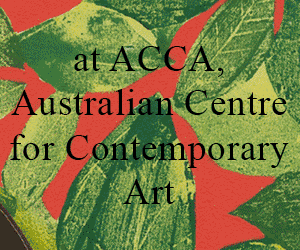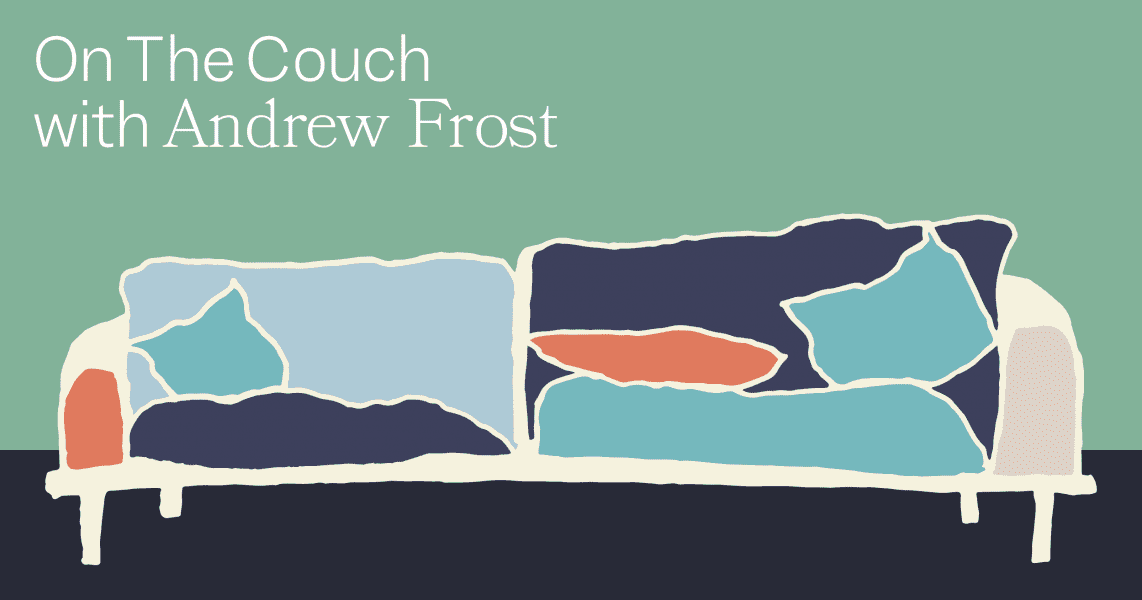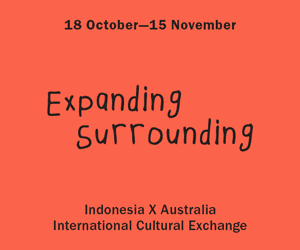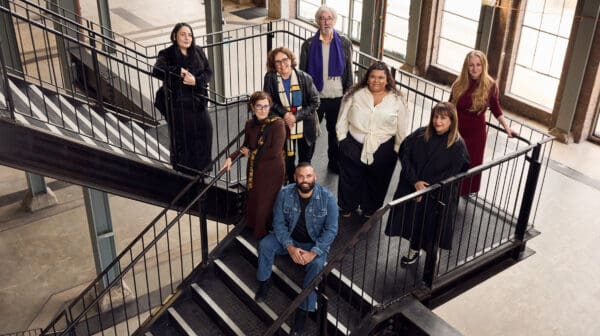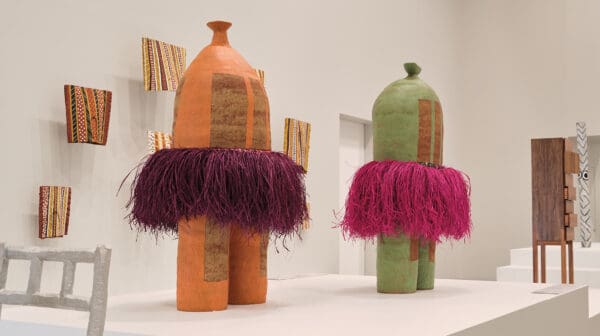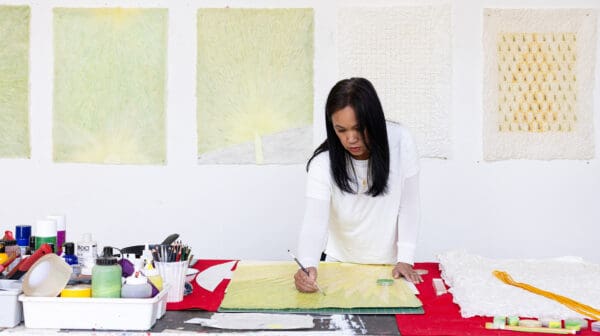In his third session On the Couch, Andrew Frost admires the survival strategies of artists in the face of both actual catastrophes and crippling ennui.
I often think about the artist Steve Harrison. Back in December 2019 – during the catastrophe before last – Steve survived a bushfire that engulfed his home in the Southern Highlands town of Balmoral NSW by taking shelter inside a makeshift kiln he’d constructed in his garden.
With no escape from the fire front, and with his driveway, street and most everything else ablaze, he crawled inside an L-shaped box that he’d made out of the material that’s used to insulate a kiln.
He thought he was going to die. He told ABC News, “I could have if I hadn’t thought about plan B. In that little kiln enclosure I made, I had a fire extinguisher, a bucket of water, a drinking water bottle and a fire blanket.”
Steve lost his studio, and all his ceramic works stored there, but he survived, along with his house, which he and his wife had spent the day of the fire wrapping in aluminium foil. It was an ingenious bit of thinking, applying the process of making art to another problem: what keeps heat in, also keeps heat out. Brilliant.
I thought to mention this story to my friend Nancy who rang the other night. She called about 6.30pm and told me that she’d just drunk a bottle of Rosé. (Nancy is not her real name, but everything else in this column is real.)
She has a few issues to deal with.
Nancy lives in picturesque isolation on the south coast of NSW, but there are very few visitors during this particular catastrophe. And her husband is living away from home working on a construction site. She is living temporarily alone, and she’s an artist. But she has a recurring issue with her right arm and shoulder which often makes painting very difficult. She’s tried everything – drugs, injections, working with her left arm – although she refuses my occasional suggestions to become a video artist.
But now, Nancy tells me, being an artist now is a useless activity. “The arts are being defunded, all the galleries are closed, I want to do something useful, like being a pathologist, you know, an essential worker who helps people.”
Most artists must have, at one time or another, had similar thoughts when things aren’t going well. It’s not just that careers don’t go right, or that there are crises that overwhelm us, be they climate change or pandemics, it’s the recurring and dreadful feeling that being creative is an indulgence.
Steve’s survival in the Balmoral fire is a great story. So is Nancy’s.
She has had commercial representation and sold work, but it hasn’t all been plain sailing either: her gallery closed, her applications for funding, support and residencies have only occasionally been successful, and she makes most of her money as a marriage celebrant – another avenue of income temporarily shrunk down to virtually nothing.
But she keeps going, a combination of determination and a fatalistic acceptance that being an artist is what she does, her true identity. Nancy works in her studio constantly, painting, drawing and making sculptures. She organizes and stages her own exhibitions. She sells work to friends and patient collectors, and puts away money to go on her own art trips and residencies – to Melbourne, or maybe overseas.
Nancy tells me over the phone that, at the moment, she is continually repainting a series of canvases – over and over – and she’s not entirely sure why. She is self-aware enough to know that her creativity has an obsessive side.
Being creative for most artists is as fundamental as breathing – it is something that has to be done. The trick seems to be balancing obsessive perfectionism with the ability to make the work look immediate, unselfconscious, perfectly formed, as though this is the way it was always meant to be. This does not always happen.
One thing I say to Nancy is that getting back to basics, being forced to so, or just by choice, is helpful in reminding us why we do the things we do, those seemingly useless activities support our thinking, our creativity, and reinforce the values we have about the purpose of our lives.
“I feel a bit sick,” says Nancy. “Maybe I should go to bed.”
I suggest instead that she should eat something – maybe toast? – but I’m thinking, yeah that’s a bit grandiose, a bit over the top.
Being reminded of your interests, obsessions and creative choices can be a bit nauseating. I sometimes look at all the books on my shelves, or all the music and movies in my collection, and instead of being reinvigorated, I’m haunted by the fact that my interests are so repetitive, so circular.
The only consolation is output – turning all that ‘inspiration’ into something else, be it writing, or making art, or cooking, or whatever. I say this to Nancy.
“Yeah, and supporting each other is important too.”
On this we agree. Maybe the consolation of enforced isolation is that like Steve Harrison, sheltering in place is the only option for survival, and a cautious stepping out into the post catastrophe world will put it, or our bit of it at least, on the right track once more.
“I think I will have toast. I’m going now. Goodnight.”


